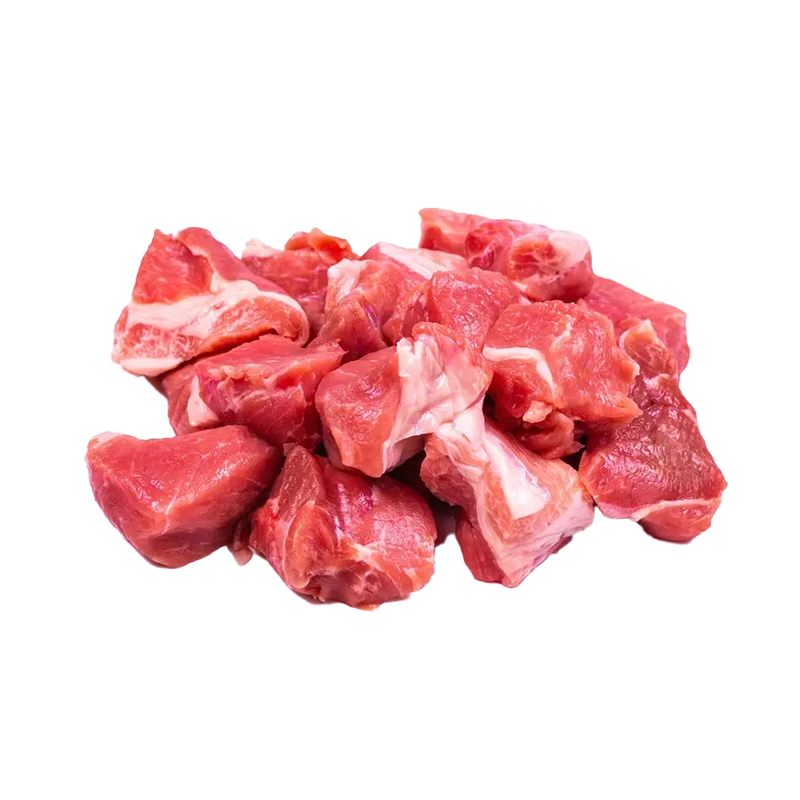Pork For Stew — Nutrients, Health Benefits, And Shopping Tips

Written by Listonic Team
Last update on September 4, 2024
Pork for stew nutrients
Nutrition facts
Amount per 100 g
Calories
🔥 143 kcal
| Nutrition per: 100 g | Value | % Daily Value* |
|---|---|---|
| Carbs | 0 g | - |
| Fiber | 0 g | - |
| Sugars | 0 g | - |
| Glycemic Index | 0 | - |
| Protein | 21 g | 42% |
| Sodium | 59 mg | 2.57% |
| Total Fat | 6 g | 7.69% |
*The % of Daily Value (DV) tells you how much a nutrient in a serving of food contributes to a daily diet. 2,000 calories a day is used for general nutrition advice.
21 g
💪 High Protein Content
Pork for stew facts & tips
Health benefits
- High in protein, supporting muscle growth and repair.
- Rich in essential vitamins and minerals such as B vitamins, iron, and zinc, supporting overall health and well-being.
- Versatile and nutritious when combined with vegetables and healthy ingredients in stews.
Health risks
- High fat content depending on the cut used, which can raise cholesterol levels and increase the risk of heart disease when consumed frequently.
- Risk of contamination with harmful bacteria such as Salmonella or Trichinella, particularly if the pork is not properly cooked to a safe internal temperature.
- Potential for high sodium content in pre-seasoned or processed stew meats, which can contribute to hypertension and increased cardiovascular risks.
- Potential for additives in pre-packaged pork stew meats, such as preservatives or flavor enhancers, which may cause adverse reactions in sensitive individuals.
How to choose pork for stew
For stew, choose pork that is rich in connective tissue and fat, like shoulder cuts, which will render down and tenderize beautifully during slow cooking. The meat should be deep pink and have a moist, not dry, appearance.
Stay away from pork cuts that are excessively lean or have discolored spots, as these pieces can become tough when cooked slowly. Meat that emits a strong odor should also be avoided, as it indicates spoilage.

How to store pork for stew
Store pork for stew in the refrigerator, tightly wrapped in plastic or placed in an airtight container. This ensures the meat stays fresh for up to three days. For extended storage, consider freezing the pork.
Exposure to air can cause pork to spoil rapidly. Avoid leaving it uncovered or in poorly sealed packaging. Always thaw frozen pork in the refrigerator and use it promptly to ensure the best flavor and safety.
✅ Extra Tip
How long does it last?
Pork for stew can last for 1-2 days in the refrigerator. For longer storage, pork for stew can be frozen for up to 6-8 months. Proper packaging, such as vacuum-sealing, helps maintain its quality over longer storage periods.
What to do with leftovers?
Leftover pork for stew can be repurposed into a variety of hearty dishes. Use the cooked pork in a stir-fry with vegetables and your choice of sauce, or mix it into a casserole with grains, cheese, and vegetables. Pork stew meat is also great when shredded and added to tacos, burritos, or sandwiches.
Use the stew meat in a pasta dish with a tomato or cream sauce, or mix it into a shepherd’s pie with mashed potatoes on top. If you have a lot of pork stew meat, consider making a batch of pork pot pie by mixing the meat with vegetables and gravy, then topping with pie crust and baking until golden. Pork stew meat can also be added to soups or stews for added richness and flavor. For a quick meal, serve the pork over rice or noodles with a side of steamed vegetables.
👨⚕️️ Medical disclaimer
Discover products from other categories
Listonic Team
Fact-checked
Our editorial team checked this article to make sure it was accurate at the time of publishing it.
Get the top-rated shopping list app

pork for stew
1 piece
Outline







